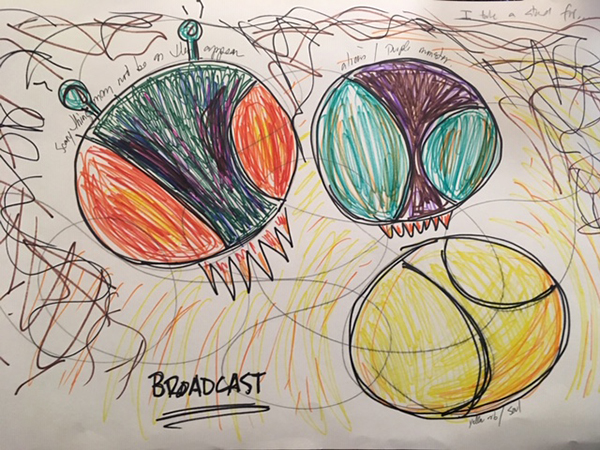Do you know your WHY? What do you stand for in life, work, and business? If you are feeling bored, unfocused, or increasingly annoyed at your customers, colleagues, and clients, there’s a good chance that you’ve lost connection with your WHY. Use of the expressive arts can help you reclaim that connection, and restore your sense of purpose and fulfillment.
Why You Need Connection with Your WHY
Your WHY should be one of the first aspects explored in business or career planning. It is at once related to your values, your passion, and your purpose. It informs the culture of your business, your ideal client, and the type of professional environment within which you will thrive.
Among students and non-entrepreneurs, your WHY is something that should be considered before interviewing for a new job, or deciding on your career path. What you stand for determines the climate, the culture, and the types of connection and relationships you wish to make on a daily basis.
For people in high-stress or highly emotional jobs, it is important to reconnect with your WHY on a regular basis. It helps to provide buoyancy and a broader, more positive focus. For example, when I worked in a residential treatment facility for women with eating disorders, the staff discussed their WHY on at least a weekly basis: sometimes in meetings, sometimes randomly in the break room. Reclaiming our WHY would dissolve tension, stress and emotional fatigue resulting from the constant exposure to our clients’ trauma, fear and other emotional distress. It also formed stronger bonds among our team.
Your WHY and Your Values
Many life coaches and professional training programs will ask you to define your WHY through an exploration of your values. Often, a list is provided, and you are asked to pick the three to five words that hold the most meaning for you. This is a great method for getting focused.
In my business, the defining values are freedom, balance, gratitude, excellence, ethical, and safety. These are values that I personally embrace; they are standards that I expect of my team; and they inform the environment that I strive to build for my clients.
On Values, Taking a Stand, and Emotional Need
In addition to the general values such as those named above, your WHY may involve taking a stand on larger, global issues such as human rights, or environmental protection. These, too, can inform what you do as a professional, where you work, and who you work with.
The limitation that arises with this scenario is that it can be distinctly mind driven: your stand may be circumstantial, too narrowly focused, or the result of values placed upon you by others. Consider: is what you take a stand for truly holistic in terms of your spiritual and emotional needs? Are you missing a piece that is defined by the most authentic, deep seated piece of you?

When I did an artwork about my WHY (shown above), the artwork said Just Be You. This makes sense: although my values reflect a high standard of excellence as well as the need for emotional comfort and safety (among myself, my team and my clients), authentic self-expression is at the heart of all that I do. It’s something much easier said than done: Just Be You.
Use Expressive Arts to Holistically Define Your WHY
Expressive art making will help you explore your deep, authentic WHY. Expressive art making is the use of line, color, texture and materials to express an emotion or idea. The final artwork is usually either abstract or symbolic. The emphasis is on expression, not perfection. There is no artistic skill needed to participate in this art form.
Set the Intention to Explore Your WHY
Before making an expressive artwork, set the intention: What is my WHY? What do I stand for in the deepest way? Then, create your artwork. There are many techniques that you can use to create your artwork: create a collage, painting, or make line art.
As you create your artwork, it is important to incorporate how you want feel when you are doing work that is engaged with your WHY. Do you want to feel empowered, lighter, brighter, more buoyant? Where in your body do you feel that? How would you express that in color or shape? If you are collaging, what images might represent these feelings?
Process Your Artwork
Processing is a form of translating the deeper meaning that is held in your artwork. Think of this as deciphering your artwork’s code. To process your WHY artwork:
1. Quietly observe the artwork.
2. Journal with your artwork as if it were your friend. Ask your drawing: what wisdom do you have to share? In addition to what I already know about my WHY, what do I need to know? What one to three actions can I take to reconnect, or become more connected with my WHY?
3. Answer the questions from the perspective of your drawing. PRO ART THERAPY TIP: try writing your answers with your non-dominant hand (the hand you don’t usually write with). This will feel and look awkward, but your answers will be brief and to the point! (Note: Non-dominant handwriting can sometimes be anxiety provoking; if this happens for you, not to worry! Simply proceed with journaling with your dominant hand).
Your WHY and Personal Satisfaction
Defining and claiming your WHY can redirect your boredom, frustration, and lack of focus. It will deepen your job satisfaction, gratitude, and feeling of personal reward. It will help you make the necessary adjustments towards greater fulfillment.
Initially, you might feel a deep dissatisfaction if you find that your WHY is not in alignment with your job or with the people you work with. My suggestion: write a gratitude list about your job and colleagues. Gratitude can help restore your mindset, and shift your energy. You may find that there are many reasons beyond money that this job meets your needs…but those needs may have nothing to do with your WHY!
Originally published at JodiRoseStudio.com, with additional resources.


